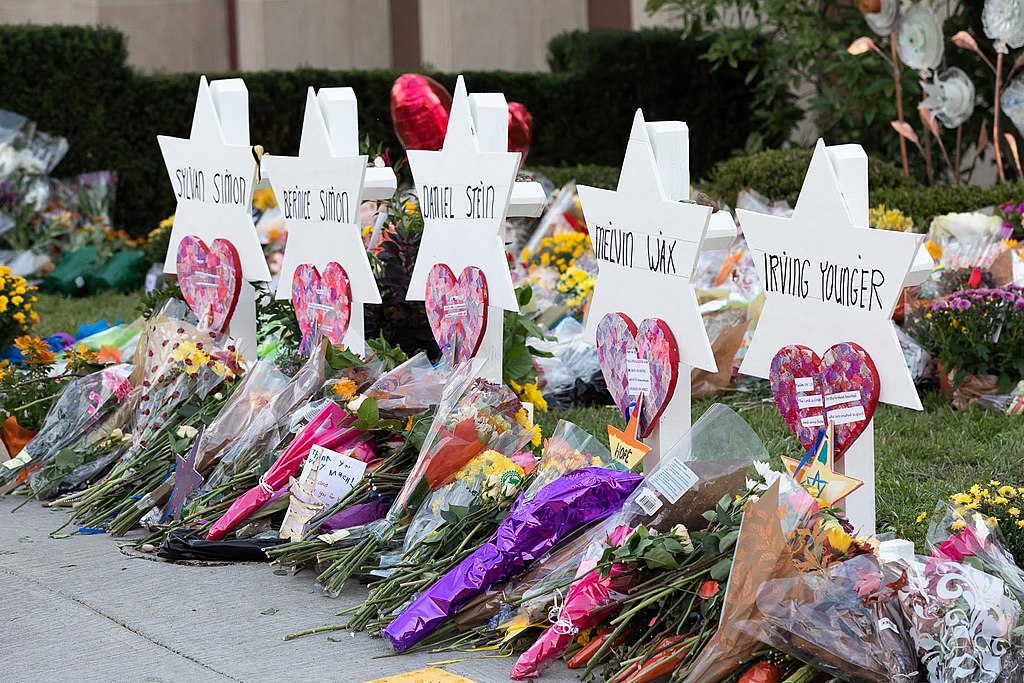
Last week a gunman carried out a horrific premeditated attack on two mosques in the city of Christchurch, New Zealand that left fifty people dead and a churning wake of grief, death, sadness, anger, and fear.
Digital Dying recognizes religion as one of the primary ways that human beings attempt to grapple with the terms and shape of life and death. Through religion, we discuss and define death, and try to understand it, which is why a deadly hateful attack on a religious institution is particularly devastating. For these truly are sanctuaries, places where we go to escape a world that can often be frightening and inhospitable. Sanctuaries offer safety and comfort and acceptance. They take you in. And they help us humans chart what we hope is a good path through life, and death.
Unfortunately, as evident from data of the Global Terrorism Database at the University of Maryland, attacks on houses of worship and sanctuary have been on the rise in recent years. “Mass shootings have become a recurring part of American life, and religious institutions a recurring setting,” writes Sarah Mervosh in an October 2018 New York Times article, published after the Tree of Life Synagogue mass shooting in Pittsburgh. “In each case, the shock is compounded by the violence at what is supposed to be a safe space for peace and healing,”
In just the past ten years, the list of deadly attacks in houses of worship across the United States is long and troubling. What does it say about our relationship to death, and our fears and frights, that this carnage has come so often and so intentionally to the places where we pray, prayer that is meant to bring us closer to understanding both life and death?
Sikh Temple in Oak Creek, Wisconsin, August 2012 – A man named Wade Michael Page shot and killed six people and wounded three others at a Sikh temple in suburban Milwaukee. The shooting happened early on Sunday morning, just as services were getting ready to begin. “Congregants ran for shelter and barricaded themselves in bathrooms and prayer halls,” the New York Times reported, “where they made desperate phone calls and sent anguished texts pleading for help as confusion and fear took hold.” Page was an Army veteran with ties to white supremacist groups. He killed himself at the scene. They forgave the assailant “that very day,” a priest named Harjinder Singh told the New York Times. He also told the paper that each new attack on a house of worship brings back the grief. “Every time this happens, we feel the pain again,” Singh said. “It is like when you have a bandage on your body, and it is ripped away.”
Emmanuel African Methodist Episcopal Church in Charleston, South Carolina, July 2015 – Dylann Roof shot and killed nine people gathered for Bible study in the historic black church in Charleston. Roof was a self-radicalized white supremacist and confessed to the killings. He shot the victims while they prayed, and had intentionally targeted them for their race. Roof had entered through an unlocked side door of the church and taken a seat at a weekly Bible study meeting. Concealed in a pack on his waist was a semiautomatic pistol. “When the congregants closed their eyes for a familiar benediction, the sound of gunfire roared through the fellowship hall,” the New York Times reported. “Churchgoers dove below tables but Mr. Roof kept firing, striking the victims at least 60 times.” In January 2017 Dylann Roof was sentenced to death for his crimes.
Al-Fuquan Jame Masjid Mosque in New York City, New York, August 2016 – An Imam named Maulana Alauddin Akonjee, and his assistant Thara Uddin, were fatally shot in broad daylight as the two left the mosque. A Fox News article about mass shootings at houses of worship in the US reported that a man named Oscar Morel was convicted of the crime of first-degree murder and sentenced to life in prison without a chance of parole. The motive for his murders remains unclear, according to the Fox article.
Burnette Chapel Church of Christ in Nashville, Tennessee, September 2017 – Emanuel Kidega Samson shot and killed one woman outside the Nashville church then silently walked through the church and shot and wounded six people before pistol-whipping a 22-year-old usher who confronted him. Samson carried two handguns, and during the altercation with the usher, he shot himself in the chest. The usher, Robert Engle, ran to his car and got his own gun which he used to subdue the wounded Samson until police arrived. Samson is a native of Sudan. He reportedly left documents indicating that the attack was revenge for the 2015 Charleston church shooting.
First Baptist Church in Sutherland Springs Texas, November 2017 – A gunman named Devin Kelley killed 25 people, plus an unborn child, and later himself, at the First Baptist Church, located in a rural area outside San Antonio, Texas. Twenty people were wounded. Kelley, dressed in all black, with a ballistic vest strapped to his chest and armed with a military-style rifle, had stormed into the church in the middle of services and opened fire. According to the New York Times, “Law enforcement authorities have said the shooting might have stemmed from a dispute between Mr. Kelley and his mother-in-law.” The victims ranged in age from 5 to 72. Several children were killed, including the pastor’s 14-year-old daughter. Eight members of a single family were murdered.
Tree of Life Synagogue in Pittsburgh, Pennsylvania, October 2018 – Robert Bowers entered the synagogue armed with an AR-15-style assault rifle and at least three handguns and shot and killed eleven congregants. He wounded four police officers and two others. “All Jews must die,” Bowers reportedly yelled, as he opened fire. His social media accounts were filled with anti-Jewish slurs and references to anti-Jewish conspiracy theories. Hours before Bowers carried out the assault he reportedly posted on social media: “I can’t sit by and watch my people get slaughtered. Screw your optics, I’m going in.” The age of the victims ranged from 54 to 97.
In reading over these stories I am deeply saddened. These are news stories, they are stories of hate and horror, and they are also death stories, but of course, that means that they are stories of life too. In seeing all the stories listed together one overwhelming question that emerges is, Why? Why such horror? Why such murder? For an argument? To prove a point? To try and show someone that you are strong? And that others are weak?
I am reminded of a quote of the famous conflict photographer James Nachtwey. For decades, Nachtwey has documented famine and war and genocide for magazines like Time and National Geographic. In a 2001 documentary about his life and work called “War Photographer,” Nachtwey says:
“It’s occurred to me that if everyone could be there just once, to see for themselves what white phosphorous does to the face of a child, or what unspeakable pain is caused by the impact of a single bullet, or how a jagged piece of shrapnel can rip someone’s leg off. If everyone could be there to see for themselves the fear and the grief just one time, then they would understand that nothing is worth letting things get to the point where that happens to even one person, let alone thousands.”
When we expand beyond the United States and include attacks on all houses of worship across the planet within the past ten years, the numbers of dead quickly does rise into the thousands. In May 2010 simultaneous attacks on mosques in Lahore Pakistan killed 94 people and injured more than 120. In 2011 an attack against Coptic Christians in Alexandria, Egypt killed 23 people and injured nearly 100. A suicide bombing in June 2015 at a mosque in Kuwait killed 27 people and injured 227. At least 130 people were killed in a bombing near a mosque in the Iraqi capital of Baghdad last June. And unfortunately, the list goes on, and on.
But fortunately, other parts of our humanity stir within us too. Last Friday, an interfaith group of New Yorkers gathered in Washington Square Park, in New York City, to show solidarity with victims of the attack on the mosques in New Zealand.
“After a hate-filled madman entered a US synagogue last October and murdered 11 praying Jews, we held a vigil in NYC for them,” one New Yorker posted on Twitter, in an attempt to rally people to attend the event. “As we cried and remembered the dead, members of the local Muslim community stood along the periphery to protect us. I’ll never forget it.”









